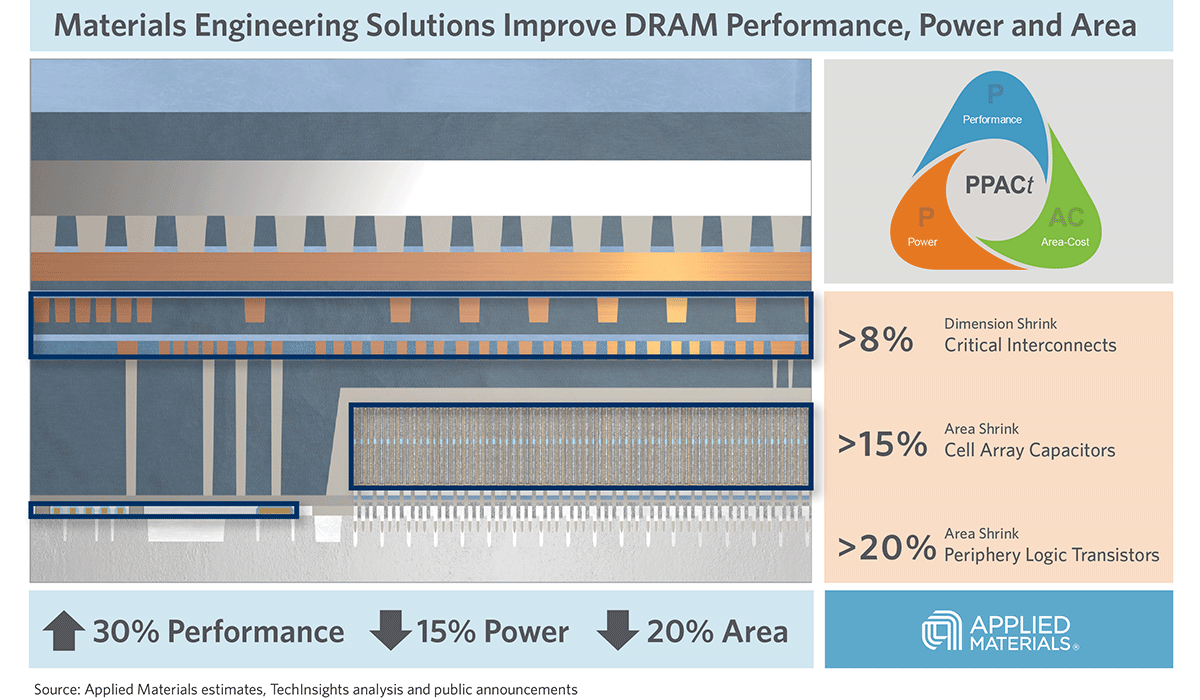Products & Technologies
Products & Technologies
Services
Resources
Posted
May 04, 2020

Stay updated on our content.
COVID-19: Applied Ventures’ Life Sciences Portfolio Companies Tap Materials Engineering to Fight the Deadly Virus

May 04, 2020
It’s safe to say that materials engineering is the lifeblood of Applied Materials. Our unique ability to create, shape, modify, analyze and connect materials and devices is critical to advancing the semiconductor industry roadmap. Today, as materials engineering is helping usher in new chip designs and system architectures for the Internet of Things (IoT), Big Data and AI, it is also being used by other industries to drive innovation.
Applied Ventures, the venture capital arm of Applied Materials, is using its expertise in materials engineering to work with startups and early-stage companies across a wide range of industries, including life sciences—an area that is taking on increased importance as the world learns to adapt to the “new normal” that is COVID-19. Several life sciences companies Applied Ventures has invested in are working tirelessly to use materials engineering and imaging capabilities to help the medical community detect, treat, curtail—and ultimately suppress—this viral pandemic. Here are three such companies that I want to recognize for the role they’re playing in fighting COVID-19.
Exo Imaging Fields Portable Ultrasound Device for COVID-19 Diagnosis
A significant challenge to treating COVID-19 is testing patients to determine if they’ve contracted the virus. With hospitals short of beds and test kits, Exo Imaging, Inc. has developed a portable ultrasound device that can be used in point-of-care settings to examine patients’ lungs.
Exo’s ultrasound platform is based on medical electronics, materials science and semiconductor engineering know-how. It combines a thin-film piezo-materials stack, new sensor technologies, advanced signal processing and computation with the economies of scale of semiconductor manufacturing to dramatically reduce the cost of imaging.
Conventional approaches use X-Ray machines or CT scanners to examine a patient’s lungs to detect respiratory problems and inflammation that might suggest the presence of COVID-19. The challenge for physicians is that these machines are expensive and require dedicated space to operate—typically an entire room. Moreover, the patient needs to be brought to the machine, potentially contaminating large areas and the imager, which is not easy to disinfect.
Exo’s ultrasound platform is small enough to fit in the hand and can be used to triage patients virtually anywhere and it can be easily disinfected. As the company’s president and CEO Sandeep Akkaraju said, “Our mission is to fundamentally change the economics, usability and accessibility of high-quality medical imaging and therapeutic tools”… by “bringing diagnostic-grade medical imaging to the pocket of every caregiver and clinician worldwide.”
Ontera Developing COVID-19 Diagnostics Platforms
Before they can develop an efficacious treatment regimen, physicians must first have the means to quickly and accurately detect the COVID-19 virus. Ontera, Inc. is building molecular diagnostic point-of-care platforms that do just that by testing different strains of the coronavirus.
The platforms use silicon nanopore chips and proprietary biochemistry to accurately detect and differentiate single DNA, RNA and protein molecules. The company’s NanoCounter is the first, ready-to-use, solid-state nanopore measurement system using pre-fabricated nanopores, fluidic test strips, a low-noise amplifier and advanced control software to allow users to resolve, measure and count single molecules. Aimed at making sequencing library prep fast and affordable, it will help researchers speed overall experiment time.
A second, portable device, the NanoDetector, is a shoe box size integrated sample-to-answer diagnostics instrument. It will be the first diagnostics platform that will allow clinicians to conduct lab quality tests at point of care across NAT, serology and urine tests with high sensitivity and specificity.
This molecular diagnostic point-of-care platform, targeted to be validated in the field this fall, can potentially be used on the front lines of the COVID-19 fight to test patients and tell if they are infected by covid or flu, or if they have been infected and developed the antibodies.
Twist Bioscience Aids COVID-19 Diagnostic, Vaccine and Therapeutic Development
Twist Bioscience is developing synthetic DNA that replaces the need to work with—and transport—live virus samples. By developing widely available genetic materials that can be safely handled, Twist is enabling researchers to more quickly create diagnostic tools, vaccines and new therapeutics.
Twist’s proprietary, semiconductor-based synthetic DNA manufacturing process features a high-throughput silicon platform that miniaturizes the chemistry necessary for DNA synthesis. This reduces reaction volumes by a factor of 1,000,000 while increasing throughput by a factor of 1,000—enabling the synthesis of 9,600 genes on a single silicon chip at full scale. Traditional synthesis methods produce a single gene in the same physical space using a 96-well plate.
Twist is also working with the government and local hospitals in China, as well as many institutions throughout the world, and has launched a custom next-generation sequencing panel to detect the SARS-CoV-2 virus, the virus that causes COVID-19, to enable genotyping that can help distinguish viral variations in diverse areas of the world.
And, the company’s biopharma division is working to develop antibody therapeutics to treat COVID-19 using its proprietary antibody drug discovery and optimization platforms.
I applaud these Applied Ventures portfolio companies and many others that are bringing together materials engineering and medical expertise to help address the COVID-19 pandemic, and wish them continued success in the years ahead.
Tags: Applied Ventures, COVID-19, life sciences, materials engineering, Nanopore, Piezo, Exo, Ontera, Twist Bioscience, Diagnostics, DNA, AI, Big Data, portfolio companies
Anand Kamannavar
Global Head of Applied Ventures

Anand Kamannavar is the Global Head of Applied Ventures. In this role, he oversees Applied’s >$300M global venture investment portfolio of 80+ companies across 15 countries. He has over two decades of experience in technology, new business development and venture capital, with successful venture exits in Enphase (NASDAQ: ENPH), Adesto (NASDAQ:IOTS) and Voltaix, and a focus on identifying and leading investments in companies from “materials to systems” including semiconductors, AI/ML, materials, sensors, Industry 4.0, next-generation displays, optics, life sciences and other high-growth markets. He currently serves as a board member or observer in eXo Imaging, Ultivue, Solid Energy and Ontera. Prior to his career in venture capital and new business development, Anand held various engineering and business development roles with Hewlett-Packard's server group where he was awarded key U.S. patents. He received an MBA with Honors from the University of Chicago Graduate School of Business and holds graduate and undergraduate degrees in electrical and electronics engineering.

Now is the Time for Flat Optics
For many centuries, optical technologies have utilized the same principles and components to bend and manipulate light. Now, another strategy to control light—metasurface optics or flat optics—is moving out of academic labs and heading toward commercial viability.

Seeing a Bright Future for Flat Optics
We are at the beginning of a new technological era for the field of optics. To accelerate the commercialization of Flat Optics, a larger collaborative effort is needed to scale the technology and deliver its full benefits to a wide range of applications.

Introducing Breakthroughs in Materials Engineering for DRAM Scaling
To help the industry meet global demand for more affordable, high-performance memory, Applied Materials today introduced solutions that support three levers of DRAM scaling.
